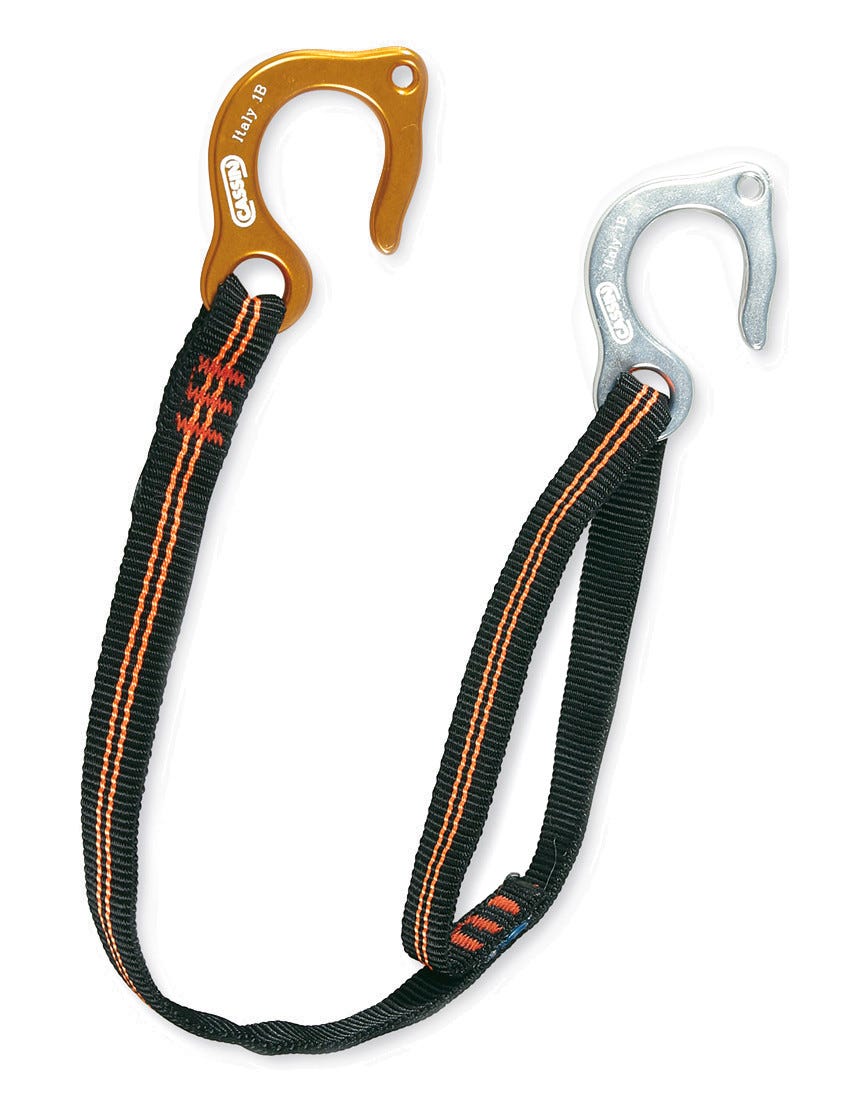Fifi Q&A
Hi Andy
Earlier in the year, I went on a weekend-long big wall course at a big Welsh outdoor center. The instructor taught, rather than using a Fifi hook to secure yourself to a piece, to have 2 carabiners- A primary one clipped directly to the belay loop and a second clipped to a short sling which was girth hitched to the belay loop.
The guidance was to get as high as possible on each piece and clip the direct carabiner, only using the extended one if absolutely necessary.
It makes sense but in my limited aid climbing experience and reading had not encountered this method before.
Would be good to get your take on the merit vs efficiency vs safety trade-off of this method vs a fifi hook vs a fifi hook on an extension vs something else I’ve never seen or heard of. (Primarily in the context of A1/A2 on a route such as the Nose.
Big fan and all the usual arse sucking that goes along with emails such as this. Looking forward to seeing you speak in Christchurch next month.
Cheers I
Hi
The subject of your 3rd hand or short connecter is one that has no real answer (apart from that anyone who says there’s one answer is wrong!).
In my time I’ve used just about every system you can use, including:
Single Karabiner on belay loop.
Fifi hook tied to belay loop.
Double Fifi hook system, with one fifi secured at the end of a short 20cm-25cm sling/cord (cows-tail), with the second fifi secured into the knot that connects the cord/sling to the belay loop, giving you a short and long connector (3rd step or 2nd step position).
Same as above but replacing short fifi with a key lock karabiner, which is more secure when top or ‘hero loop' stepping (where the connector is held in place by upward tension).
Adjustable Kong fifi (good system but needs correct cord and some practice).
Alf-fifi, cross between an adjustable lanyard and an adjustable fifi.
No fifi/krab, and just make use of adjustable lanyards.
I’m sure there are other methods that I’ve forgotten, but each one has its pros and cons, with the more complex systems being better for difficult aid climbing, with the simpler ones better for speed/utility.
For a route like the Nose for example, because speed is important (you will generally always have limited supplies), having just a fifi (properly set up), on your harness, that you only use “metal to metal”, as in your always climb up high into your aiders and clipping it directly into the gear, is the way to go. The alternative tends to be someone with an adjustable lanyard (Petzl, Yates, Edelrid, etc), wasting a lot of time cinching it tight on every placement and then unclenching their other lanyard for the next move (this will aid up when you’ve got to do several hundred moves). Ideally, on a route like the Nose, you want to avoid using a fifi as well, as to sort of free climb from a high step, or at least hold on while you place the next piece and get on it. Here the fifi is just there for the times when you need to hang there and use two hands.

For hard aid, you may well need a combination of methods, such as a two fifi system, an alfifi, two adjustable lanyards, and a spare daisy style lanyard (this is better for doing a hard bounce test). On some hard pitches, you may end up being connected to more than one thing, especially on loose pitches.
One good little trick is to set your fifi onto your belay loop with a piece of 5mm Dyneema (so it has no stretch, and is super solid), adjusting it so it’s the right length when in your third step (it doesn’t want to be super tight, as leaning back a little will make it tight). When you step up to the second step, pull the fifi through the karabiner/placement, and hook the fifi back into your belay loop, halving its length.
The main drawback with a karabiner connector is that it needs to have a key lock design so as to stop the nose snagging on gear or slings, and large enough to be grabbled and manipulated. Although more secure (unlike a fifi, it won’t just fall off the placement when unweighted), it can be harder to unclip, which can be an issue in extremis or when top stepping. A fifi on the other hand, when set up correctly (you need a piece of cord threaded and tied through its head), can almost be realized even under tension. Plus being able to whip the fifi in and out of gear is vital when French-free (A0) climbing.
Hope that helps.
Best
Andy






